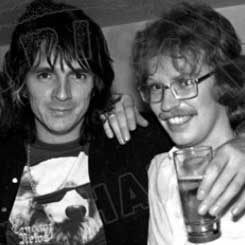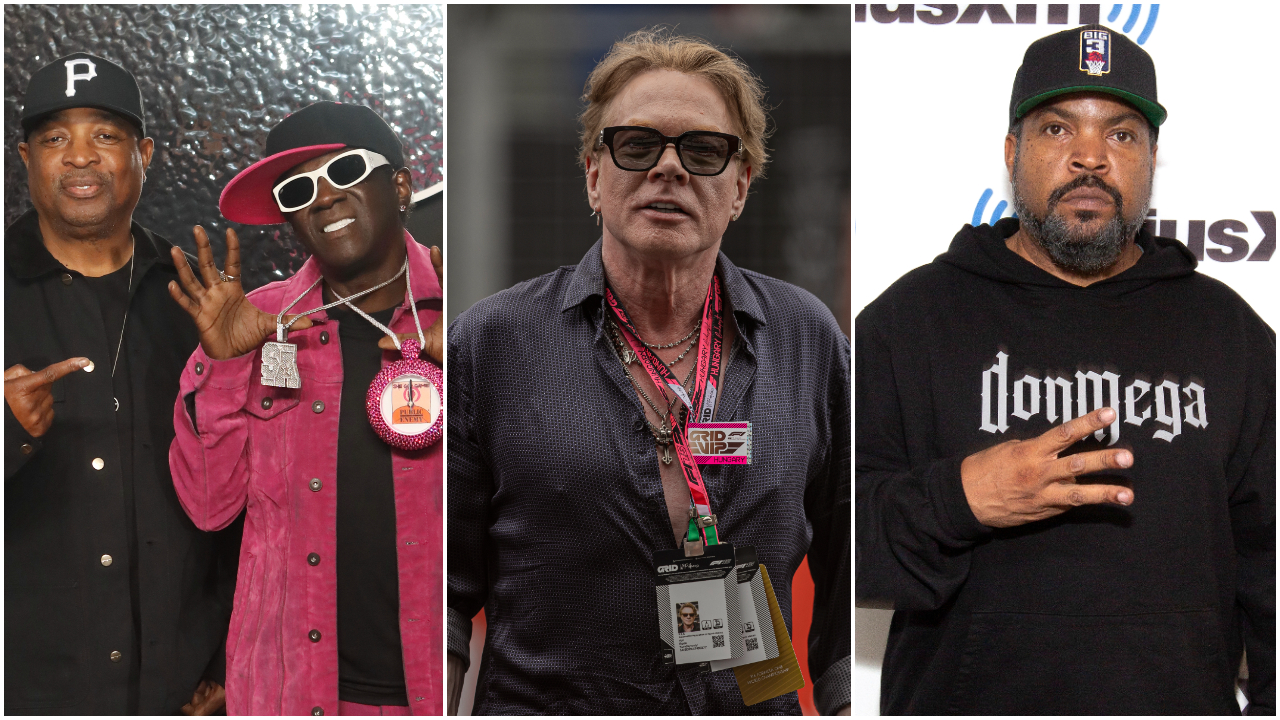Bastard offspring: how blues rock gave birth to heavy metal
Blues rock spawned a monster at the end of the 60s, and heavy metal would become one of the most enduring, tribal and quintessentially British of all popular music genres

The genesis of heavy metal was surprisingly tentative. The Who’s Pete Townshend dates his own initiation into the possibilities of the electric guitar to the first time he heard Link Wray’s solo on Rumble in 1958; but there are those who will point out that Les Paul first plugged a pick-up on to his guitar sometime around 1935; and there again, claims have been made for the practitioners of electrified guitar existing here and there in the 1920s.
Talk to any grizzled old American hippy and he’ll claim that heavy metal, this most brutal and eardrum-perforating bastard-child of rock’n’roll, started with Grand Funk Railroad. Or possibly Blue Cheer. Then again, maybe Vanilla Fudge…
Meanwhile, many Brits probably think Hank Marvin invented the tremolo arm, and that heavy metal kicked off when The Kinks released You Really Got Me. Or perhaps when Reg Presley bawled himself hoarse over The Troggs’ Wild Thing. You can’t please them all.
What is for sure is that by the 1950s the electric guitar had been perfected as a popular instrument by blues performers like T-Bone Walker to the point that it was ready and primed, and branded as a dangerous weapon when the first rock’n’rollers picked it up.
From there on it developed gradually until the early 60s when a new generation of British blues guitarists, weaned on rock’n’roll and turning toward the blues to find something more valid than the Brylcreem pop of that era, burst on to the scene.
They had grown up accepting the electric guitar, had marvelled at the echo chamber and the tremolo arm, and they began to take everything a little further. Eric Clapton, Jeff Beck and Jimmy Page – the three linchpins of the movement; Ritchie Blackmore wouldn’t make an impact until a little later – all belonged at various times to The Yardbirds, and all were virtuosi.
The debate still rages as to who actually used a wah-wah pedal first; it hardly matters now. But the seeds of the later onslaught of the senses had begun.
Sign up below to get the latest from Classic Rock, plus exclusive special offers, direct to your inbox!
In simplistic terms, the crucial elements of nascent heavy metal – though no band may have had all of them – were these:
1. A grounding in the blues, which graduates of the British blues-boom had in abundance, which yielded the characteristic basic riff.
2. A soloist: no matter that by the time of Iron Butterfly’s In-A-Gadda-Da-Vida that soloist had only two notes to play. This idea became fashionable with the rise of the self-consciously ‘artistic’ pop music in the mid-60s when Jimi Hendrix took wing and Cream arrived. Clapton has subsequently said that Hendrix opened his eyes to the possibilities of the guitar.
3. Sheer bloody volume! It is said that a small dog unfortunate enough to wander close to Blue Cheer’s speakers was killed instantly. ‘Past the pain threshold!’ threatened to become the slogan of the heavy metal merchants in the late 60s. That they could do this was down to the rapid technological innovations of Jim Marshall, Mr Watkins and many more nameless inventors who found that as fast as they could add another stack of speakers or a fuzz-box or a few more switches and synths to feed the guitar through, some kid would find a way to use them. Reverb, feedback and a whole luxury of technical effects come into play here.
4. Energy: not to be confused with volume, it is an indefinable quality which can penetrate to the mind of the most doped-out, wiped-out, deranged teenager and have him (or her; mainly him) up on his feet yelling for more, and preferably tearing up the first three rows of seats as well. This often explains why some of the best exponents of the heavy metal genre are constantly better live than on record.

But even so, after all that the burning question still remains: when did true heavy metal begin? Let’s cut straight to the quick: it started when a rather timid, unassuming man with plastic-tipped fingers named Anthony Frank Iommi lumbered out of Aston, Birmingham with a guitar lick that went something like this: ‘Dah-dah-daumm-mm! Dah-dah-daumm-mm!’
Those uniquely doom-laden, bludgeoning tones characterised the song Black Sabbath, the opening track on the album of the same name, released in February 1970.
The entire world was shell-shocked by Black Sabbath’s primeval musical tactics, and critics immediately poured scorn on Iommi’s technique: ‘He plays with all the warmth and emotion of a Xerox machine,’ said one. But it was a Xerox machine the size of a mountain and with the artillery power of a battleship. Iommi had unwittingly created a monster – and his groundbreaking guitar technique would be duplicated by thousands of aspiring six-stringers for decades to come.
But of course, heavy metal music in its pristine form couldn’t last. Nothing that good ever does. So as we entered the second half of the 1970s, heavy metal began to break down in several different ways. There always was a two-fold split in heavy metal between the basic, pounding beat that gave it its simple appeal, and the technical prowess of some of its best soloists.
As it became clear that most guitarists hadn’t three minutes’ worth of original ideas, let alone 15, many bands took the easy option and cut down on improvisation to concentrate on boogie. No names mentioned here, but you can guess whom we’re talking about. Others took technical sophistication to its logical extreme, so as well as Black Sabbath we had John McLaughlin; for every Grand Funk there was a Carlos Santana.
Over in Detroit, Iggy And The Stooges and The MC5 got the US establishment’s blood boiling with their incendiary rock’n’roll invective. Ron Asheton honed his distinctive ‘stun guitar’ style with Iggy, enveloping the perplexed listener’s ears with thick, warm blankets of fuzz-tone and wah-wah pedal effects.
But despite Ron’s extreme efforts, it’s the image of The MC5 that lingers the longest. The band combined musical flash with visual flamboyance, and showmanship was as essential an ingredient as the music.
Dressed in satin pants and sequinned jackets, guitarists Fred ‘Sonic’ Smith and Wayne Kramer would twirl, machine-gun their instruments, and drop to their knees. Smith in his bent-shouldered stance would blast riffs on his trademark Mosrite guitar, the force barely channelled through Marshall amps, ending songs with his fist raised high above his head. He would leave many an Ann Arbor stage with his fingers bleeding. And it wasn’t even the summer of ’69.
Not to be outdone, Kramer – his Strat hotrodded with a Gibson humbucking pickup, stabbing at a Big Muff distortion pedal to stay upright and take in oxygen alongside his Motor-City-Five partner – would do much the same.
Fred and Wayne’s twin-axe attack was undoubtedly awesome, but it was another Detroit dizbuster who would bring guitar-led US metal to the masses. Step forward Ted Nugent. Wherever he marched, a trail of Marshalls longer than the Great Wall Of China followed in his wake. The beast had awakened and was baring its teeth, fangs and claws. Heavy metal had well and truly arrived. And it wasn’t going away.
Geoff Barton is a British journalist who founded the heavy metal magazine Kerrang! and was an editor of Sounds music magazine. He specialised in covering rock music and helped popularise the new wave of British heavy metal (NWOBHM) after using the term for the first time (after editor Alan Lewis coined it) in the May 1979 issue of Sounds.

